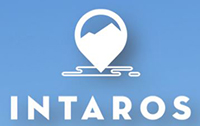This document, "Final implementation of the observing system: Data delivery and report on results of the observing systems for the Coastal Greenland", describes the final results and future perspectives, including data accessibility, of work in Task 3.1 for the Coastal Greenland region, which is identified as a key location for freshwater output from the Greenland ice sheet to the ocean. The work reported here from Task 3.1 describes a range of improvements on our monitoring capabilities for the entire journey of the freshwater flux from the Greenland ice sheet, through the fjords and into the ocean, including its impact on the marine ecosystem.
The partners contributing to the work are GEUS, Aarhus University, FMI, UPM and CNRS Takuvik. A summary of the work is as follows:
Work on the Greenland icesheet is part of the PROMICE programme and comprises a number of activities: preparing a manuscript on results from five SnowFox instruments, retrieval and analysis of data from the GNSS unit, deployment of new tilt and azimuth sensors, and retrieval and analysis of the corrected rain data sets from the ice sheet. Improvement of instruments for measuring albedo was also done. Ocean and sea ice work in Young Sound is part of the Greenland Ecosystem Monitoring Programme and includes analysis of data from mooring deployments in 2018-2019 and 2019-2020, deployment of SIMBA buoy for 2020-2021, and preparation for field work August 2021. Furthermore, there is ongoing development of sensor for vertical profiles of the inherent optical properties of sea ice, development of a radiance camera and a nitrate sensor for sea ice measurements. This development work is going on in Baffin Bay and coastal regions of Nunavuk, Canada. In Svalbard GPR data have been analysed for Hansbreen’s tributary glaciers
